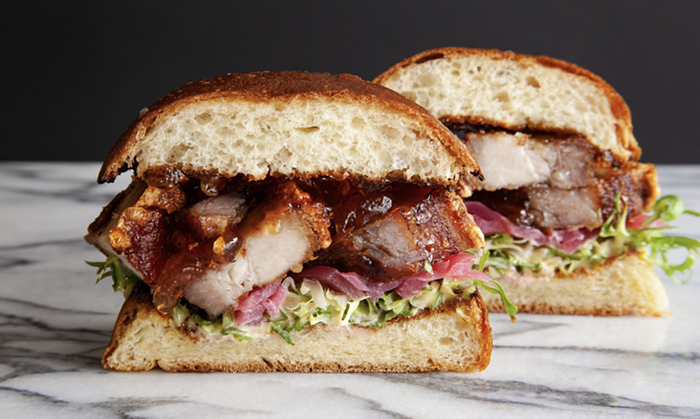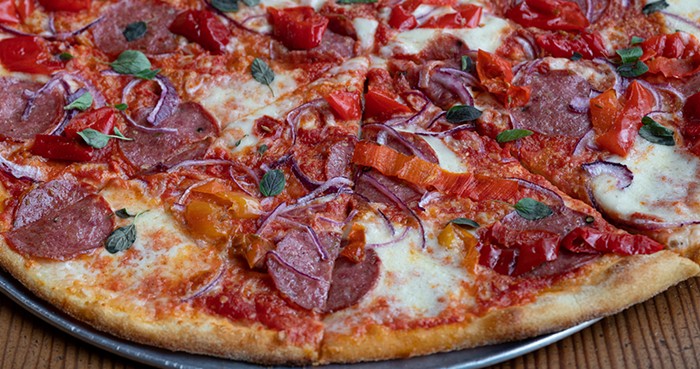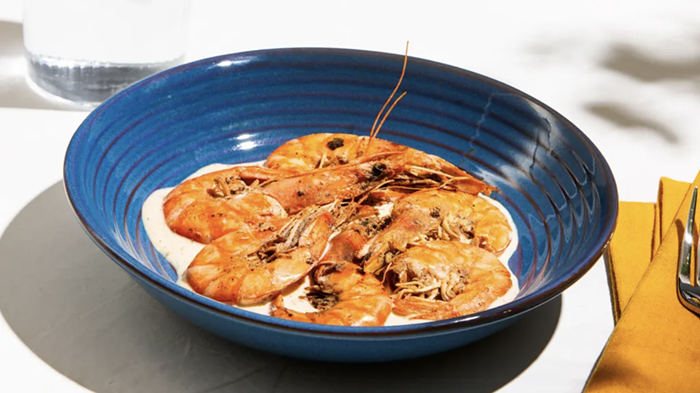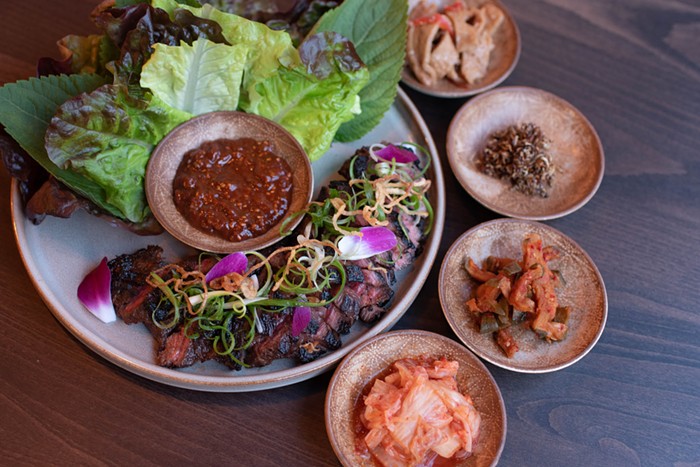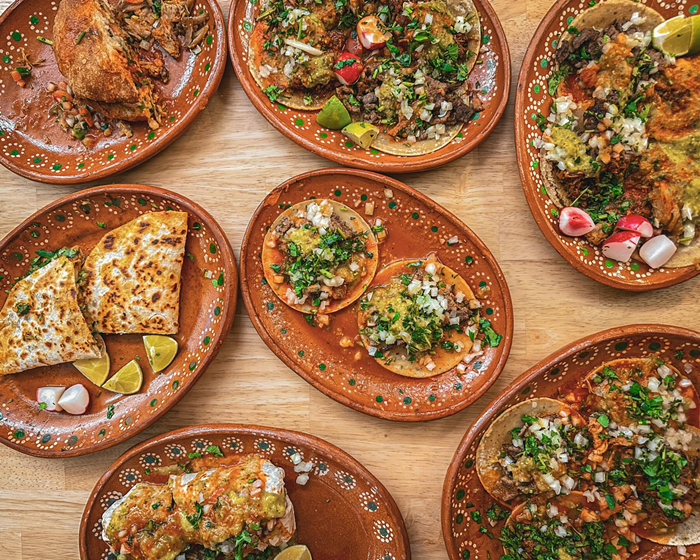Campagne was incontrovertibly great. For a quarter of a century, it provided pretty-much-perfect, highly upscale French food in the kind of hushed, posh surroundings that signaled fine dining in a time-honored way. At Campagne, you felt insulated—inside that muffled embrace that the richest dwell within and the rest of us get to visit, if we're lucky, a few times in life.
Entrée prices hovered around $30 at Campagne, but no footfall was ever audible, no flicker of want ever unanticipated. No waiter ever talked too much; no food was ever less than very, very tasty, and most often it was glorious. The classics—I still remember the coquilles St.-Jacques that doomed me to a largely unrequited lifetime longing for flawless scallops—were given minutely considered updates, and sauces were far more delicious than the sum of their parts. No glass ever went empty, and letting the adjectives—the poetry!—of the sommelier wash over you felt like the pinnacle of privilege. And then you got to drink the wine.
That Campagne was hidden away in the center of the Pike Place Market fray made it that much more of a delight. (The restaurant opened on Capitol Hill in 1985 and moved downtown two years later; its more casual downstairs iteration, Cafe Campagne, debuted in 1994 and remains open.) In the dining room, there was a view of the red neon Public Market sign and the glittering Sound. Then there was the jewel box of an outdoor courtyard, a quiet oasis exactly meant for summertime rosé, and in the winter, twinkling with lights.
The proximity to the Market meant that the food at Campagne was made with local and seasonal ingredients before such a thing was de rigueur. The rigor of the kitchen program meant that over the years, under the preternaturally wise guidance of owner Peter Lewis, Campagne turned out some of the best chefs in the city—Tamara Murphy (Brasa, Terra Plata), Jim Drohman (Le Pichet, Cafe Presse), Johnathan Sundstrom (Lark), Scott Emerick (Crémant), Jerry Corso (Bar del Corso), and more. Considering those who've subsequently received excellent training from all of these people, it is fair to say that Seattle's restaurant culture as we know it would not exist without Campagne.
You didn't necessarily have to part with an arm and a leg to enjoy Campagne. For those of us who couldn't afford to dine unless it was on someone else's dime, the bar waited. The bartenders—including, back in the day, the fantastic David Butler (now sommelier at Le Gourmand) and Jerry Tide (Union, others, now the Coterie Room)—read you like a book, treating you with every iota of the respect due in such an establishment while acknowledging the innate comedy of the richy-richness with a wink. Happy hour there—known as "L'Heure with Allure"—involved spotless, chiming $7 flutes of bubbly, $5 pommes frites, and as many little $1 pâté sandwiches as you could manage. The bar had only a few seats; it felt ingenious to be there, and lucky. This, I miss.
Now Campagne is Marché. Like Mistral and Lampreia (becoming Mistral Kitchen and Bisato, respectively), the restaurant has gone down-market, closing in January and reopening in October as a bistro-style spot in the same location. (This Marché is not to be confused with the Marché forthcoming on Bainbridge Island from beloved Seattle chef/food-writer Greg Atkinson, though it certainly is confusing.)
The interior is darker, with more angles and less cushioning, and possessed of more energy. (With all the above being said, Campagne's tranquility could also have been interpreted as staid.) Moderately upbeat, retail-grade house music plays; there are lightbulbs with good-looking filaments, the tap handles are antique doorknobs, and dish towels function as napkins. (The view and the courtyard: still there, still great, though the dark metal patio furniture looks awfully heavy.)
The first time I went in, it was for a drink, straight from Occupy Seattle at Westlake—it just seemed fitting, or possibly nicely ill-fitting. The staff at the much bigger, L-shaped bar was actively chatty; they wore big enameled French flag belt buckles. The head bartender conversed freely in support of the 99 percent. On the subject of Campagne and economic change, he observed: "People don't want the pomp and circumstance as much anymore." (After Lampreia became Bisato, a server there said, "It used to be all the bigwigs—there aren't so many around anymore, so we had to start letting the smaller wigs in.") Nearby, some bottles of wine fell clatteringly in a cupboard; another server made a joke about earning minimum wage. We were definitely not in Campagne anymore.
Dinner on a busy Friday night at Marché reinforced that fact in unfortunate ways. Servicewise, a drink order got lost, then delayed; a few sips of chardonnay were brought to bridge the gap, which was nice, but a strange substitution for a 7-and-7. (To be clear, all that anyone ordering a 7-and-7 deserves is a spoonful of sugar accompanied by a blow to the head, but still.) The drink, when it came, was given to the wrong person—same with entrées, by a tag-team second server who showed complete assurance in doing so. Waits, in general, were long. Meanwhile, our regular server came and chirped, "So who here writes for The Stranger?" Busted, or maybe not, as someone had called to reserve and given an accompanying colleague's name—the point being, though, that this was Marché's A-game.
The food had its low moments, too. A green salad ($9) was dressed to an oily gloss but without any particular flavor. (Served family-style, it was missing service utensils.) On the other hand, a savory tart ($9) was wonderful: a buttery, crisp-edged crust with a thin layer of leek custard, topped with fresh leeks and smoky oven-dried tomatoes, served on a cutting board in a quantity that was plenty for three. A warm fingerling potato salad ($9) was creamy and mild, with electric-orange orbs of salmon roe for an ideal salty, eye- and mouth-popping addition. The 7-and-7-orderer changed his mind about fish eggs entirely as a result of this dish—but then the Marché burger ($15) disappointed him and everyone, being small, on the dry side at medium-done, with lukewarm-upon-arrival french fries (le sigh!). Fresh linguine with braised calf's trotter ($18) tasted faintly of sage, but was otherwise subtle to a fault; the trotter sat in gelatinous bits, adding little, while Brique Agour cheese melted together into its own lacey top strata, refusing to join the dull party. Dover sole ($16) was defensible: salt-and-pepper broiled, with shallots and capers and lemon.
A return visit found service much more pulled together: They returned to ask when they forgot a part of an order, and the sommelier, Cyril Fréchier, stopped by to offer a taste of a $7 glass of wine and was kind enough to compliment the ordering of it. (Fréchier's work life has surely changed; he curated the 700-label list at Rover's for 17 years, then Campagne's extensive, expensive one since 2007. Now there's wine on tap and a flight served in blackout glassware so you can guess what you're drinking. It seems possible he's having more fun.) A slab of roasted beet ($6) with pistachios was fine, while house-made sausage with chanterelles ($21) achieved excellence, as light as sausage can be, though the greens were very vinegary, the potatoes slightly mealy. Pan-roasted chicken leg ($19) was crispy-brown-skinned, deboned into tender medallions with ideal thyme flavor, served with rounds of braised daikon radish that soaked up the sherry reduction marvelously.
Chef Daisley Gordon started at Campagne in 1995—he's the one that, if you were fortunate enough to eat there in recent years, made your food so very, very good. It's a big transition he's undertaken, just in volume alone. There is every reason to believe that Marché will become as bulletproof a choice for a bistro supper as Campagne was for fancy-pants dining for all those many, many years. Apparently, it may just take a little time. ![]()

